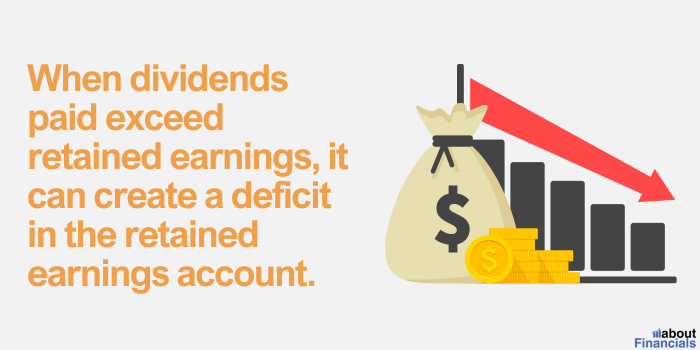Dividends paid by a company represent the distribution of its profits to its shareholders.
It is a way for the company to share its financial success with its owners and provide them with a return on their investment.
Dividends paid are typically authorized and declared by the company’s board of directors, and the payment is made to the shareholders on a specified date.
The accounting for dividends paid involves recording the distribution in the company’s financial statements, reflecting the impact on relevant accounts.
Accounting for dividends paid to parent company
Dividends paid by a subsidiary to its parent company
The holding company recognizes the receipt of dividends from its subsidiary as income.
This recognition occurs when the subsidiary declares the dividend, regardless of when it is actually paid.
The amount recognized as income is typically based on the parent company’s ownership percentage in the subsidiary.
Recognition and recording of dividends paid to the parent company
To record dividends paid by a subsidiary to the parent company, a journal entry is made. The specific accounts used may vary based on the company’s chart of accounts and the nature of the transaction.

Typically, the parent company debits the cash or receivables account to reflect the increase in cash and credits the investment in subsidiary account to reduce its carrying value.
Here’s an example of a journal entry for recording dividends paid by a subsidiary to the parent company:
Debit: Cash or Receivables Account
Credit: Investment in Subsidiary Account
This entry reflects the increase in the cash or receivables balance and reduces the carrying value of the parent company’s investment in the subsidiary.
Accounting for dividends paid to minority interests
In cases where a company has minority shareholders or non-controlling interests, dividends paid to these stakeholders require specific accounting treatment.
Minority shareholders are those who hold a smaller percentage of ownership compared to the majority shareholders or parent company.
Dividends paid to minority shareholders are considered distributions of profits attributable to their ownership stake.
When accounting for dividends paid to minority interests, it is important to allocate the appropriate portion of the dividends to these stakeholders. This allocation is based on their ownership percentage or other agreed-upon arrangements.
In the financial statements, dividends paid to minority interests are typically presented as a separate line item, indicating the distribution made to these shareholders.
This provides transparency and helps stakeholders understand the distribution of profits among different ownership groups.
Dividends paid that exceed retained earnings
Sometimes, a company may declare and pay dividends that exceed its available retained earnings.

Retained earnings represent the accumulated profits of the company that have not been distributed as dividends or transferred to other reserves. Paying dividends in excess of retained earnings raises important accounting considerations.
When dividends paid exceed retained earnings, it can create a deficit in the retained earnings account.
This deficit represents the amount of excess dividends paid that exceeds the accumulated profits of the company.
To account for this situation, the company may need to reduce other equity accounts, such as additional paid-in capital or accumulated other comprehensive income, to absorb the deficit.
Accounting for dividends declared
Before dividends can be paid, they must be declared by the company’s board of directors. The declaration involves a formal resolution to distribute a portion of the company’s earnings as dividends to shareholders.
The declaration of dividends establishes a legal obligation for the company to make the payment to its shareholders. It also sets the record date, which determines the shareholders entitled to receive the declared dividends.
Once dividends are declared, they need to be recognized and recorded in the company’s financial statements. The declaration date is important for recognizing the liability of dividends declared.
The accounting treatment involves recording a liability in the financial statements, typically referred to as “Dividends Payable” or a similar account. This liability reflects the obligation of the company to pay dividends to its shareholders.
Accounting for dividends payable
Dividends payable represents the amount of declared dividends that have not yet been paid to the shareholders. It is a current liability on the company’s balance sheet until the dividends are distributed.
When dividends are declared, they create an obligation for the company to make the payment to its shareholders. This obligation is recorded as dividends payable in the accounting records.
To account for dividends payable, a company records the liability in the financial statements. The dividends payable amount is reported in the liabilities section of the balance sheet under current liabilities.
Journal entry for dividends paid
The journal entry for recording dividends paid involves reducing the dividends payable liability and decreasing the company’s cash or bank account. The specific accounts used may vary based on the company’s chart of accounts and the nature of the transaction.
Here’s an example of a journal entry for recording dividends paid:
Debit: Dividends Payable Account
Credit: Cash or Bank Account
When dividends are paid, it affects several accounts in the company’s financial statements. The key impacts include:
- Reduction in Cash or Bank Account: The cash or bank account decreases by the amount of dividends paid.
- Reduction in Dividends Payable: The dividends payable liability is reduced as the payment is made to the shareholders.
- Decrease in Retained Earnings: Dividends paid represent a distribution of accumulated profits, resulting in a decrease in the retained earnings account.
- Impact on Statement of Changes in Equity: Dividends paid are reflected in the statement of changes in equity as a reduction in retained earnings, highlighting the distribution to shareholders.
Accounting for dividends on financial statements
Dividends paid are typically disclosed in the statement of cash flows as a cash outflow from financing activities. Additionally, dividends paid impact the retained earnings balance and are reflected in the statement of changes in equity.
Dividends paid do not appear on the income statement since they are distributions of profits rather than expenses. However, it is important to provide proper disclosure in the financial statements to communicate the dividend payments made during the reporting period.
Final thoughts
Accounting for dividends paid is a crucial aspect of financial reporting for companies.
Understanding the journal entries, impact on accounts, and presentation in financial statements is essential for effective accounting for dividends paid. Overall, diligent accounting for dividends paid facilitates reliable and informative financial reporting.
Related posts:

